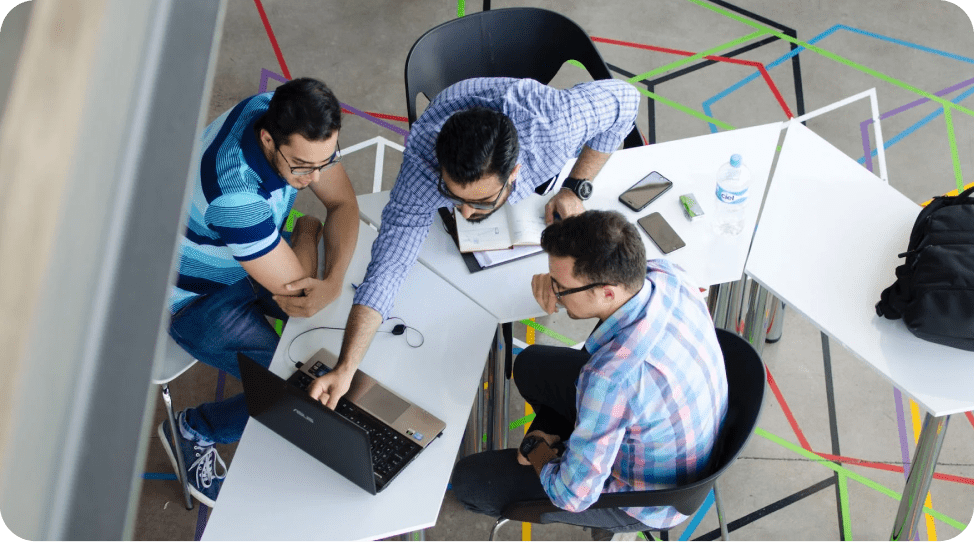In the era of uber digitalization, the focus of consumers and businesses alike have shifted on value, wherein users have made their stance clear that they will stick with companies that give them maximum value for their money and time.
On the other end, businesses, across domains, are finding themselves in the middle of a customer-first mode of operation – a way of survival that requires them to consistently deliver high value through their digital products.
This is where the need for a well-curated digital product development process comes into the picture.
The concept of digital product design and development revolves around building a software solution or application that will be used by a digital audience and would have a positive impact on the business operations. For a simpler understanding of the concept, think of any digital solutions you interacted with recently, they could have been a messaging platform or an HRM software.
To gain a definite understanding into the expectation that companies have from digital product development a PWC report came in where 200 industrial companies were surveyed and they revealed that they expected their digital solutions to bring in greater efficiency, lower the production costs, and expedite the go-to-market time with positive customer experience being a by-product.
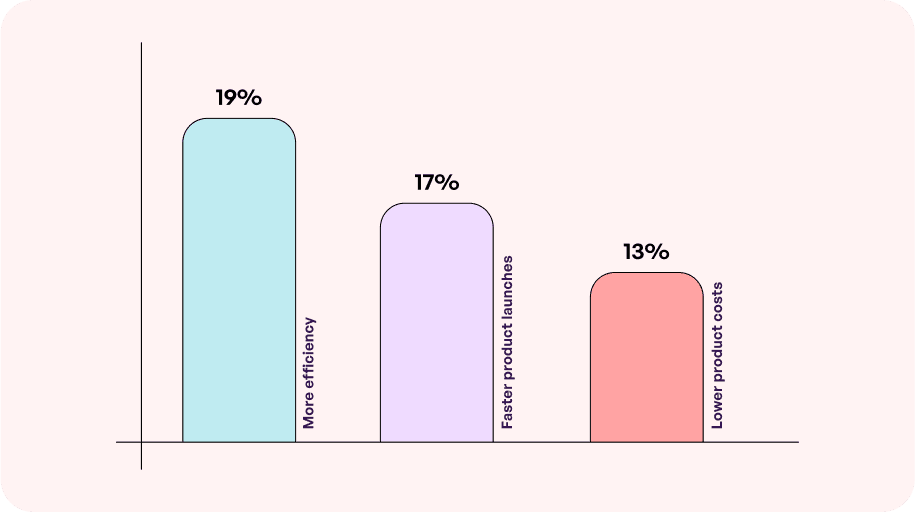
Table of contents
5 phases of digital product design and development process
The intent behind digital product development services is usually different. While some businesses are looking for an enterprise-grade SaaS solution, others might be looking to build an OTT platform. However different the product ideas be, the digital product development process is more or less consistent. Let us look into them.
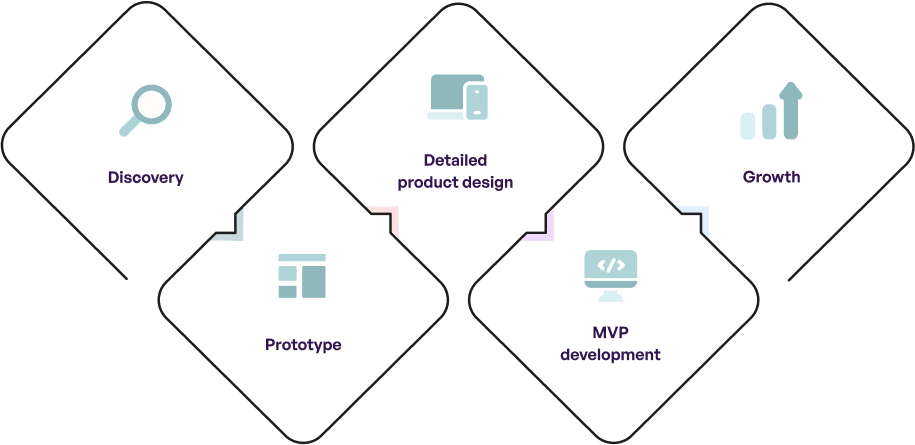
In order to design and engineer a “preferred platform” that helps consumers and businesses alike, a well-curated set of digital product development stages is required. And it is exactly what we are are going to discuss in detail today.
Discovery
Discovery is probably one of the most critical, yet often overlooked digital product development stages. It is an extensive process of identifying problems worth solving. The reason businesses often overlook this step is because they either think they know the industry too well or are too married to their idea.
If you as an entrepreneur don’t fall into either category and are starting fresh, these are the ways to tackle the discovery stage to find new product ideas.
- Find ideas around you – Businesses like Airbnb and Uber were formed at the back of a necessity. As a prospective entrepreneur, you should always be on the lookout for problems that a majority of people around you are facing and then try to find a marketable digital solution for it.
- Improve existing product – Oftentimes we take inspiration from a product that already exists and think of ways how we would have done it differently – it could be on price point, a new feature, or simply an automation of the core service offering.
- Research trends – Emerging trends like veganism, generative AI, traceability in the supply chain, etc. can give you a headstart into the business vertical you should focus your digital product development efforts in.
Once you have gathered a few ideas at the back of these discovery modes, validate them against market, technological, and customer acceptance, willingness to pay.
Prototype
With the product now validated, the next digital product design and development stage that comes is creating a prototype of the product which can be used for gathering the initial reaction and acceptance. The prototype helps establish answers to the following questions before the actual digital product design process starts.
- What is the need for the digital product?
- What will the customers and businesses achieve from the product usage?
- Who will use the product?
- How will the digital product solve users’ problems?
Detailed product design
At this digital product development process stage, a detailed design of the product is made with interactive elements to give stakeholders a detailed understanding of what the product will look and feel like when the end users will work on it.
The intent at this stage is usually to build a version that the developers will work on to make the final digital product.
An effective digital product design process usually follow these steps –
- Specification of design elements and user movements
- Creation of wireframes
- Developing high-fidelity prototypes
- Usability testing to ensure that the design meets users needs
Explore how we follow these steps to design an immersive product by visiting our Neojn DesignRush profile.
MVP development
Once the designers hand off the design to the developers, the MVP creation phase starts. Here, the minimum viable version of the product is built with a basic set of core features to test the acceptance among real users. The reason why a majority of entrepreneurs opt for MVP instead of full-fledged product development is because the former get them access to customer feedback before they have invested heavily in the end-to-end product development cycle. Moreover, it acts as a collateral for sharing with the investors.
A critical part of the MVP phase of digital product development life cycle lies in choosing the best launch strategy. Typically, you get two options here.
- Soft launch – MVP is launched among a limited segment of target market.
- Hard launch – MVP is made available to the entire market with a heavy marketing push.
Growth
After you have gone through the entire digital product development process and have built the MVP, the next stage that comes is growth. Here, the feedback which you must have gathered after the MVP launch is integrated in the digital product development life cycle along with new feature additions and tech integrations.
At this stage itself the digital product transformation strategy is also set up which defines the optimal product price, the marketing strategy, and how businesses will approach continuous updation and delivery.
These five parts digital product development stages often see additions in the form of extra steps like validation of the idea, digital product testing, and a separate market research and analysis phase. However, at Neojn, we club certain closely related phases together so that new entrepreneurs don’t get overwhelmed with the number of stages when they have just initiated their digital journey.
As you dive into these digital product design processes, it is critical to keep a look out for some commonly occuring challenges in the journey. Let us look at some of them at a high level so that you can ensure that the digital product development services you have invested in have a profitable outcome.
Unsure of where to start your
digital product development
journey from?
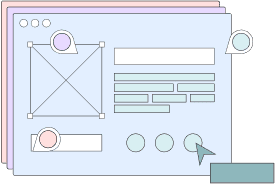

Commonly occurring digital product development services challenges
Digital products can be complex and entangled with development and launch challenges that come to the surface when entrepreneurs are not careful. Some of those roadblocks are –
- Absence of detailed market research – A lack of competitor, user, and general market research can lead up to a situation where businesses don’t have a clarity on what the world really needs and if their digital product is aligned with that requirement.
- Budget limitations – Building an innovative feature-rich digital product comes at a cost, something that new entrepreneurs find challenging to accumulate.
- Limited technical expertise – Entrepreneurs rarely have the complete technical expertise to build a digital product that uses the right blend of technology and framework to create a scalable product. To solve this, they often turn to a digital product development company.
- Ensuring digital security – The digital space is laced with cybersecurity and hacks issues. It can get complex to build a digital product which is completely hack-proof without any prior experience in cybersecurity.
Solving all these challenges while ensuring timely go-to-market is something that typically keeps entrepreneurs from entering this journey in the first place and is exactly what we wish to solve at Neojn.
We have helped a number of businesses set their digital product development journey off the ground by assisting them chart the digital strategy, followed by the design, development, and scaling of the final product version.
Recently we worked with Caristas, a car selling company who wanted to take the car sale and purchase journey online through a web and mobile app. We helped them with the end-to-end product development journey starting with the scope definition through extensive market research – something that highlighted the need for integrating AI based surveys for a smart buying choice – followed by the product design, and development.
The result? Caritas has established itself as a game-changer in the retail automotive industry in a very short span of time. The project is just one of the many digital products our digital product development company has built and deployed.
Explore how Neojn fits
into the digital products’
success journey
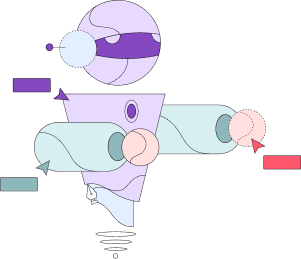

Digital product development journey can be complex, however we can make the process easier with our dedicated expertise that ranges from idea validation, design, to development, and scaling of the product. Get in touch with our team of product development experts, today.
FAQs
Q. What is digital product development?
A. Digital product development is the process of building software solutions, applications, and other platforms that are a part of the digital product ecosystem.
Q. What is the digital product development process?
A.The digital product development process comprises following stages – product discovery, prototype creation, UI/UX design, MVP development, and post-launch growth.
Q. What is the digital product life cycle?
A. The digital product life cycle is fairly different from the regular product development life cycle that comprises introduction, growth, maturity, and decline. The digital product life cycle is made of stages like product strategy, product design, product development, and product growth.
Q. What are the benefits of digital product development?
A. A digital product gives businesses a wide span of benefits spanning from better operational efficiency, lowered market time, reduced production costs, and ultimately an image of being a customer-first company.
